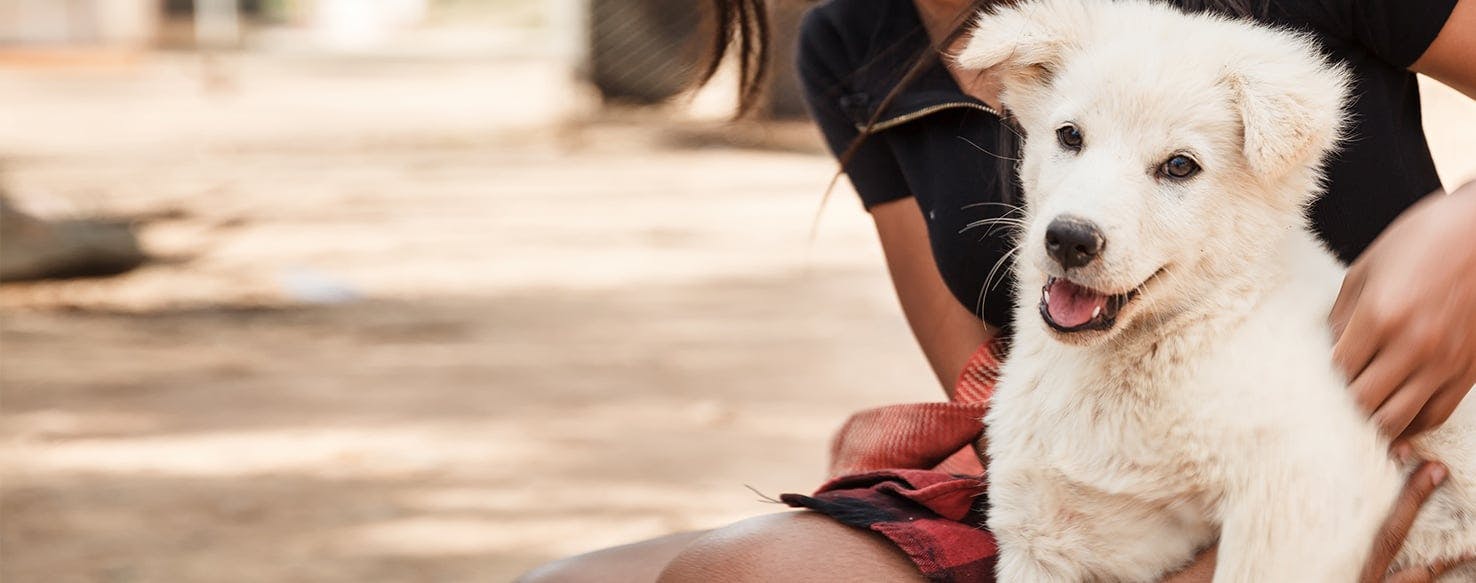- Home
- The Daily Wag!
- Behavior
- Why Do Dogs Want To Hold Hands

Common
Irregular
Teaching your dog how to “shake” or give paw is one of the more common commands that people like to teach their dogs. Something about shaking a dog’s hand is both endearing and comical, and it is usually an easy command for dogs to learn. That being said, many dog trainers teach dogs this command with a warning about how the behavior might change over time.
If you’ve taught your dog to give paw, then your dog has learned to associate the act with a reward. This is not in and of itself a problem, but you may notice that your dog starts to paw for your attention without being prompted by a command. Over time, this behavior might worsen until you feel like you can’t be around your dog without getting clawed or pestered every couple of seconds. Here is how giving paw can turn into a problem, and what to do about a dog that can’t keep his paws to itself.
Giving paw is an instinctual behavior that dogs will use to get your attention. Young children exhibit the exact same behavior when they want the attention of their parents. Even as adults, we will occasionally feel it necessary to touch someone on the shoulder in order to get their attention. In all cases, being touched grabs a person’s attention, and your dog knows this just as well as you or a child would know it. In most cases, a dog that is pawing you wants to be petted, wants to play, or simply wants your attention for the sake of having your attention. All dogs crave our attention, and the feeling of connection between a dog and human is felt both ways.
The attention-seeking behavior becomes dangerous when it is constantly met with positive reinforcement. If you pet your dog every time he paws you, you are teaching your dog that his attention-seeking behavior will be met with that reward every time. This is why it can be problematic to teach an attention-hungry dog how to give paw. You are rewarding your dog with a treat for exhibiting a behavior that is both instinctual and learned. Your dog is now able to utilize this behavior according to what he has learned, and what he feels naturally inclined to do.
Once giving paw becomes consistently associated with reward, dogs may turn to it for reasons other than attention. If you punish your dog for doing something wrong, he may give you his paws as a type of appeasement gesture. Some people claim that once their dogs learn how to give paw, it becomes a universal gesture for everything from food to going outside to play. Regardless of the reasons behind the pawing, it has become a behavioral problem as soon as it begins to annoy you. As with a child that tugs at your shirt too much, you will need to turn to behavioral training to correct the constant pawing.
Need advice about your pet's health?
Get answers fast from a veterinary professional 24/7 in the Wag! App.
Get Vet ChatIn most cases, the key to stopping excessive pawing behaviors is to learn how best to ignore your dog and stop the positive reinforcement that you may have been giving your dog. Instead of petting your dog every time he paws you, pet him until he paws, and then get up and walk away. Your dog will be confused at first. If you withhold your petting or your treats, you may incite even more pawing behavior than usual. Although your dog is pawing more frequently, continue not to pay your dog any attention. Eventually, your dog will learn that the best way to get your attention is to no longer paw at you.
Even getting frustrated at your dog is a form of attention. This type of reinforcement, called negative reinforcement, still lets your dog know that he can get your attention through pawing. Getting angry with your dog or punishing him for pawing may not stop your dog from attempting to use the pawing behavior for positive reinforcement, and it may cause other problems. You should stick to ignoring your dog as the best course of action. The longer that you have been unintentionally indulging your dog’s pawing behavior, the longer that it will take your dog to unlearn his behavior and find new and less scratchy ways of getting your attention.
Some dogs use their paws more naturally than others. If your dog tends to use his paws to perform other tasks like moving his food bowl closer or swaddling himself in blankets, odds are they will also be more prone to the pawing behavior. Luckily, dogs that are more intuitive in the ways that they employ their paws are also capable of learning more advanced tricks using their paws. Extremely paw-conscious dogs are the ones who learn to play the piano, turn lights on and off, or dribble a soccer ball. These tricks, and giving paw as a command, will not necessarily lead to behavioral problems. The key is to reward your dog for obeying the command, and ignoring your dog when you did not.
It may be nice that your dog wants to hold your hand, but not if he paws for your attention every time you look away. Depending on the size of your dog, the behavior can quickly become cumbersome and annoying. Ignore your dog’s attention-seeking habits and you will teach him to keep his paws to himself.
Written by a Australian Shepherd lover Jonah Erickson
Veterinary reviewed by:
Published: 03/23/2018, edited: 01/30/2020
More articles by Jonah Erickson
